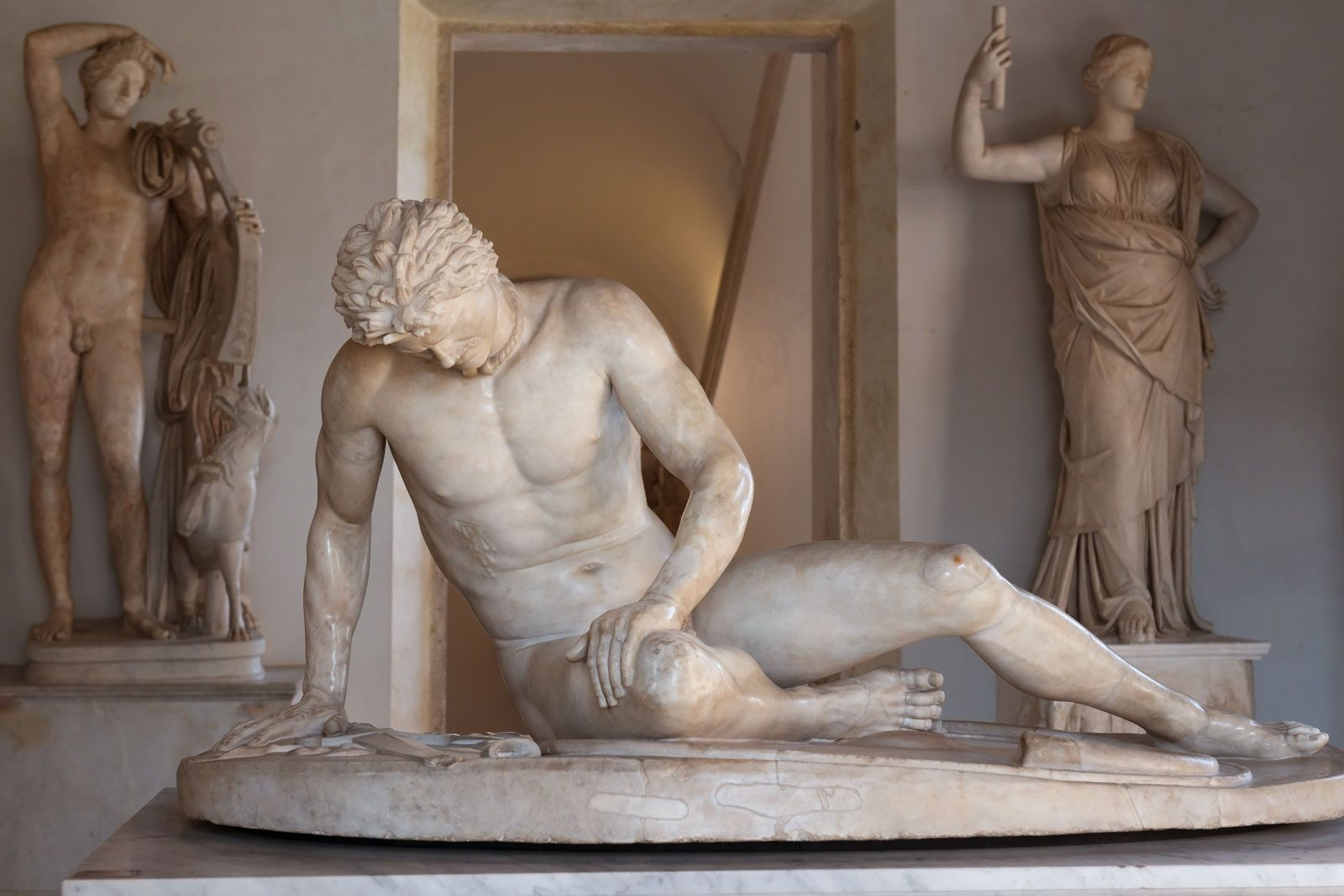Ancient Greek Art
Ancient Greek Art emerged around 8th century BCE under the Aegean civilization;a bronze age civilisation of Greek around the Aegean sea,which covered the Crete,the Cyclades and the Greek mainland.Early forms of Greek art were largely confined to ceramic pottery since the region suffered famines and forced emigrations,leading to many Greeks leave the mainland area to colonise Italy and Asia minor.
Around 650 BCE,when trade links where finally re-established between the Greeks and the Egyptians and Anatolians,that the Greek culture saw a sudden rise.
To understand Greek art more,we need to understand that ancient art among the Greeks evolved in three basic periods:
Archaic Period (c.650-480 BCE):
Under the Archaic Period,art became less stylized and had a shift towards more naturalistic impression.The period saw experimentation in it's art and culture.The walls of temples and many buildings were covered by fresco paintings with their marble or wooden structure coloured with tempera paint.
The Archaic Greek sculpture was dominated by two human stereotypes,the standing nude youth i.e. the kouros and the standing draped girl i.e. the kore.The male nudes had more importance.The sculptures were heavily influenced by Egyptian and Syrian sculptures.Around this period,the Greek Architecture relied heavily on simple post and lintel techniques.Notably there were three orders in early
Greek Architecture;Doric, Ionic and Corinthian.
Greek Pottery was the most developed art form during this period,involving large vases decorated with unique linear designs and elaborate patterns of geometrical structures such as triangles,zigzags and other shapes.Another ceramic style was black-figure pottery where figures were drawn in black silhouette, then marked with incised detail,including final touches of purple or white.
Classical Period (c.480-323 BCE)
The Classical Period witnessed the artisitical dominance in Greek mainland after Athens became the strongest Greek city state.The Ceramic art and vase panting started seeing a steep decline during this period and Greek pottery declined artistic expression became dependent on Hellenistic schools.
The zenith of Greek Architecture was the Acropolis,the flat-topped,sacred hill on the outskirts of Athens.The Doric and the Ionic style of architecture were dominant and popular in this era.
Classical Greek architecture include:the Temple of Zeus at Olympia (468-456 BCE), the Temple of Hephaistos (c.449 BCE) etc.
The famous painters of this era were Apollodorus,
The great Zeuxis of Heraclea,Agatharchos,
Parrhasius,Timarete etc.Subjects included figurative scenes,portraits and still-lifes at Athens and Delphi were relatively common.Fresco painting was still popular but had lower reputation than panel paintings.
During the late Classical Era the first female nudes appeared.The best known sculptors of the period, were: Myron (fl.480-444), Polykleitos (fl.450-430), Callimachus (fl.432-408), Skopas (fl.395-350), Lysippos (c.395-305), Praxiteles (fl.375-335), and Leochares (fl.340-320).
Hellenistic Period (c.323-27 BCE)
This period starts with the death of Alexander the Great.Animals and Humans,were acceptable subject towards sculptures and it continued the trend of naturalistic impression.Due to expansion of Greek Empire,the demand for the sculptures of Greek Gods rapidly increased providing a great market.The most beautiful sculpture of this era being Colossus of Rhodes,being 110 feet in height.
In Hellenistic Architecture, the Corinthian Order became popular and dominant with the purpose of gathering more people for entertainment purposes.The Pergamon Acropolis was one fine example of this,designed to have baths,libraries, religious temples and various other buildings making it a cultural hub.
~Samriddha Ray







Comments
Post a Comment